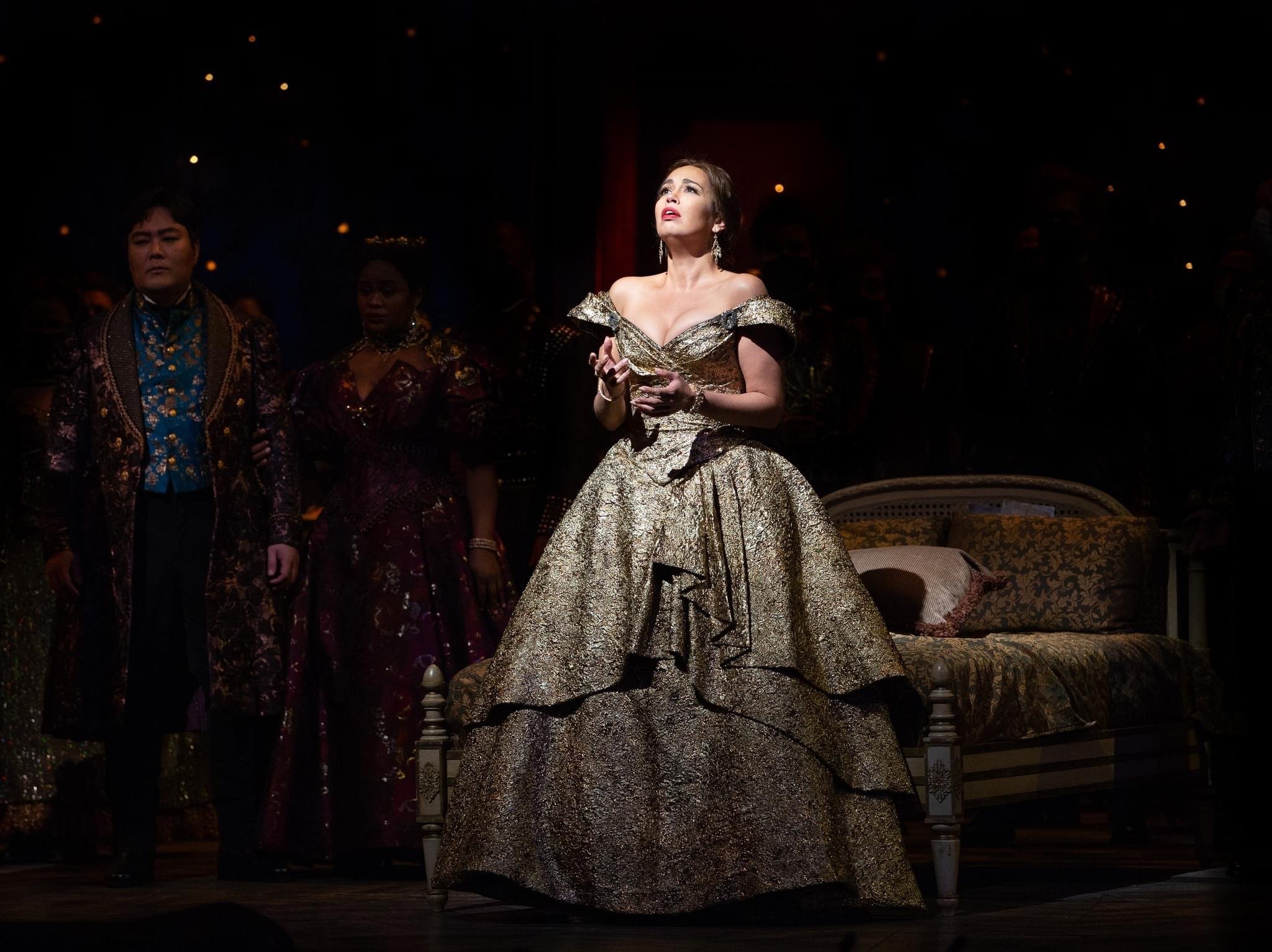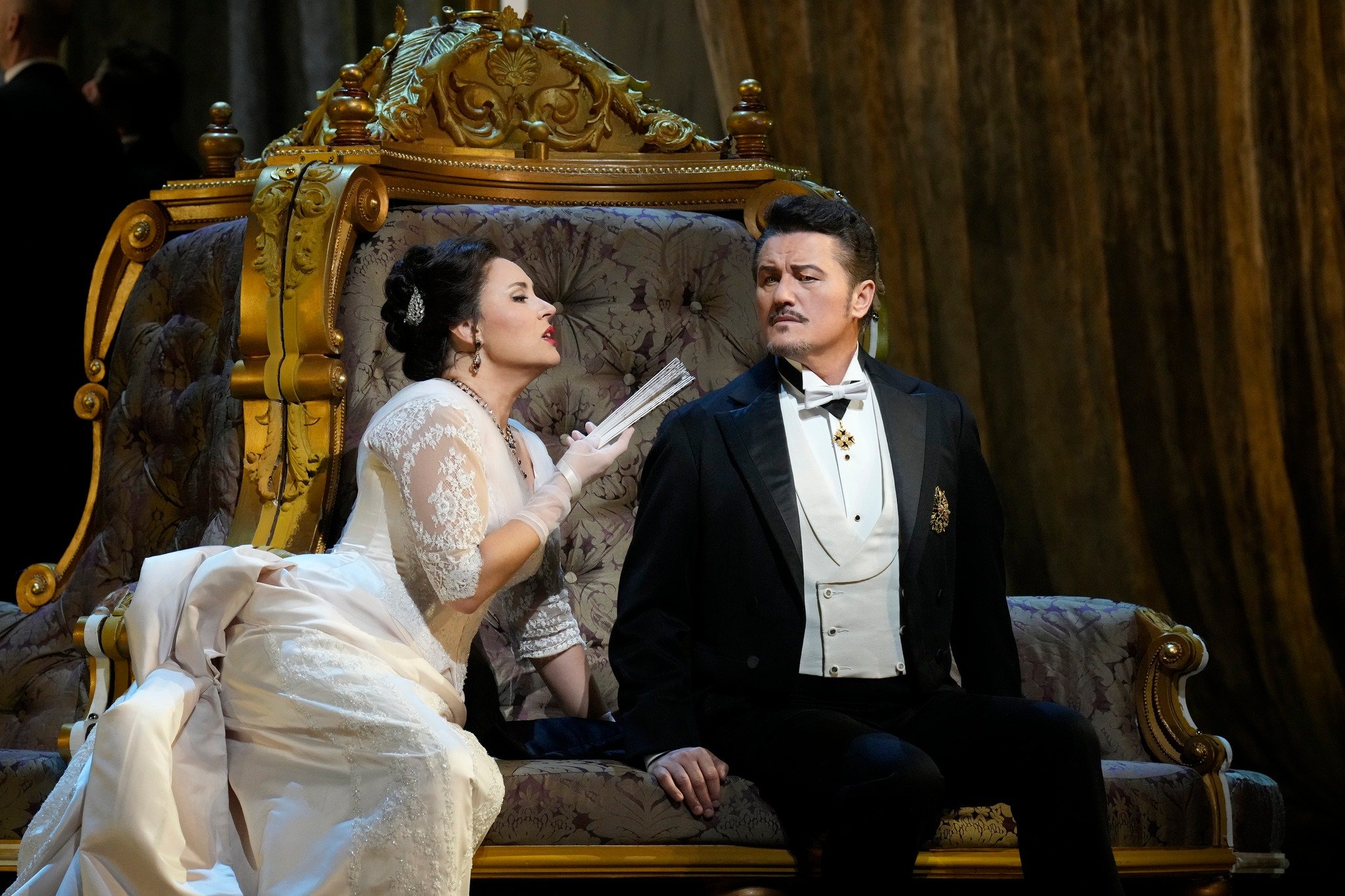Met Opera Radio Review: La Traviata
Nadine Sierra in La Traviata (Marty Sohl/Met Opera)
The great Verdi’s masterpieces each have a special quality about them. Aida is power. Il Trovatore is drama. La Traviata is beauty.
The Met regularly gives La Traviata its due onstage. This season, it’s being presented with an array of stupendous artists: three casts of singers from October to March. I listened to one of these performances live recently via the Met’s free online radio streams, and I was blown away. Why? Let’s break that down…
As Violetta, the noble traviata (fallen woman) of the title, Nadine Sierra was simply marvelous. I have never yet heard a perfect Violetta, but Nadine came the closest of all I’ve heard. Not only was her singing lovely, with blazing high notes and delicate pianos, but she pulled out all the stops and gave a full and emotional portrayal of Violetta. She loved, laughed, and cried, all while maintaining her beauty of tone.
She took time to warm up in Act 1, but she sounded more comfortable in “Un dì, felice,” her first duet with Stephen Costello, her Alfredo, and seemed completely at home by “Ah, fors’è lui.” “Sempre libera” was thrilling, her vocal lines soaring and fluttering like a butterfly as she was tugged between love and freedom.
Stephen Costello in La Traviata (Marty Sohl/Met Opera)
Luca Salsi and Nadine Sierra in La Traviata (Marty Sohl/Met Opera)
As her lover, Stephen Costello delivered a solid performance. His Alfredo was an impulsive hothead, and though sweetness or flair didn’t always come through, his voice was youthful and earnest and he possesses excellent technique. Costello’s best singing of the night came in “Parigi, o cara,” his Act 3 duet with Violetta, as he sang more gently and with smoother legato.
Luca Salsi, who’s having a marathon season at the Met, was persuasive and urgent in the role of Giorgio Germont, Alfredo’s manipulative father. With his robust voice, he brought a sense of gruffness to the performance.
The supporting cast was splendid. Eve Gigliotti’s warmth as Annina, Siphokazi Molteno’s pleasant and energetic mezzo as Flora Bervoix, and Paul Corona’s familiar calm presence as Dr. Grenvil combined to prove that no role is too small to make a difference. Ms. Molteno is making her debut at the Met - congratulations!
Maestro Daniele Callegari brought out delicacy and steadiness from the renowned Met Orchestra, although the musicians sometimes overpowered the (amazing) chorus. The prelude was an indicator of the rest of the evening, throbbing with delicate sadness and moving, like Violetta (only backward), from tragedy to longing to soft liveliness. Maestro Callegari emphasized the “heartbeat” during the romantic part, which I feel should take a backseat to the actual melody, but it was a minor grievance of mine that didn’t mar the rest of the prelude.
The Metropolitan Opera Ballet in La Traviata. (Marty Sohl/Met Opera)
The striking production, one of my favorites at the Met, is a revival of Michael Mayer’s 2018 staging and sparkles with energy and color. The set is the same throughout the whole opera, with changes being signaled by expert lighting and the moving of the “walls.” The “walls” are really an elaborate and gilded cage, a fitting metaphor for Violetta’s opulent but ultimately inescapable lifestyle.
Here, the whole opera is presented as a long flashback. During the prelude, time has stopped and Violetta, a ghost, rises from her deathbed and disappears through the curtains in the back of the room. Hardly two minutes later, she emerges for Act 1, smiling and vivacious in her cream-colored gown. Thus, we are set up for tragedy from the very beginning.
As we wept then, so we weep at the end. The orchestra heralds Death with heavy rhythmic pounding. Violetta, feeling suddenly well, utters a cry of joy (“O gioia!”) but collapses dead. Before I saw La Traviata, I had never cried at an opera; now I sob just listening to it.
This wonderful cast sings for only one more performance, on Saturday, November 19th. In January, a new cast, led by the beautifully expressive Ermonela Jaho in her signature role, takes over the run for five performances. Then, in March, there will be five more to close out the run, with another worthy Violetta in Angel Joy Blue. Who knows? Maybe I will discover my perfect Violetta in one of them.
But Nadine is superb here and now, and she is not to be missed. So hurry! Dash down to the Met to experience both her and this beautiful production for yourself!







